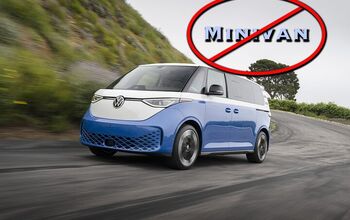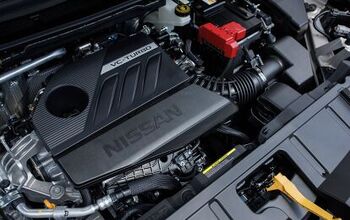What's Wrong With VW’s ID. Buzz?

Volkswagen’s long-awaited tribute to its iconic Microbus, the all-electric ID. Buzz, continues to hit roadblocks since finally arriving in the United States.
Key Points
- Volkswagen's ID. Buzz faces weak U.S. sales due to its high price, limited driving range, and delayed launch, with only 1,900 units delivered in the first quarter and a stop-sale order currently in place.
- Production and strategic missteps—like building the Buzz in Germany instead of the U.S.—led to cost overruns and slow development, while its design and feature set failed to meet the expectations of American EV buyers.
- The ID. Buzz’s struggles reflect broader challenges for Volkswagen in the U.S., where the brand continues to misread market preferences and lacks a strong presence in key segments like pickups and mainstream SUVs.
The Wall Street Journal chronologically outlined a series of missteps that have led to the ID. Buzz’s rough landing in the U.S.
The van was first previewed as a concept in 2017, but the production version of the ID. Buzz wouldn't reach American buyers until 2024‚ seven years later. That delay, combined with a steep price and modest driving range, has left the retro-inspired EV struggling to meet shopper expectations.
The initial buzz around the van was off the charts. A nostalgic design and the promise of a quirky personality drew crowds, but once people learned it would cost them around $70,000 and offer just 234 miles of range, enthusiasm started to evaporate.
Volkswagen says only 1,900 units were delivered in the first quarter of 2025, which was further compounded by the issuance of a stop-sale order in May.
In the wake of Dieselgate, Volkswagen intended the ID. Buzz to restore some of the brand’s classic appeal in America—fun, accessible vehicles that stood out from the mainstream. But that vision was compromised by bureaucracy.
The WSJ reports that rather than building the ID. Buzz in the U.S. at its Chattanooga, Tennessee plant—where the more conventional ID.4 is produced—Volkswagen assigned production to its commercial vehicles unit in Hanover, Germany. That squares with the Buzz's conceptual ethos as a utility vehicle, unfortunately, Hanover is one of VW’s highest-cost production plants, which immediately drove the ID. Buzz's price up before the assembly line had even begun running.
Compounding things, VW's commercial-vehicle engineering team lacked deep expertise in electric drivetrains and U.S. safety standards. A former North American executive told WSJ that engineers were essentially left to "figure it out" on their own, which contributed to delays and inefficiencies, subsequently driving up the price.
Those aren't the only problems either. The ID. Buzz arrives in earnest just as consumer demand for EVs in the U.S. takes a turn for the worse, along with the end of federal leasing incentives that had helped offset higher-priced electric models.
Meanwhile, if you wanted an ID. Buzz in one of those fun colors you've seen in all the reviews, well, those are exclusive to higher trim choices. There's also a severe lack of availability at dealerships. Both issues could have been potentially offset if the ID. Buzz wasn't offering 2017 levels of EV performance.
For a vehicle once seen as a symbol of VW’s electrified future in the U.S., the ID. Buzz may now be better remembered as a case study in how not to execute an EV rollout.
Become an AutoGuide insider. Get the latest from the automotive world first by subscribing to our newsletter here.

An experienced automotive storyteller and accomplished photographer known for engaging and insightful content. Michael also brings a wealth of technical knowledge—he was part of the Ford GT program at Multimatic, oversaw a fleet of Audi TCR race cars, ziptied Lamborghini Super Trofeo cars back together, been over the wall during the Rolex 24, and worked in the intense world of IndyCar.
More by Michael Accardi



































Comments
Join the conversation
I have 15,000 incredibly happy miles on my seven month old first edition ID Buzz and it really is the greatest vehicle on the planet. No complaints.
and I drive 350 miles to Lake Superior for work every weekend. Miles and miles of smiles everywhere.
Maybe they should offer the smaller / shorter version as is offered in Europe. Surely it would be less expensive. Not everyone needs a 7 passenger vechicle.